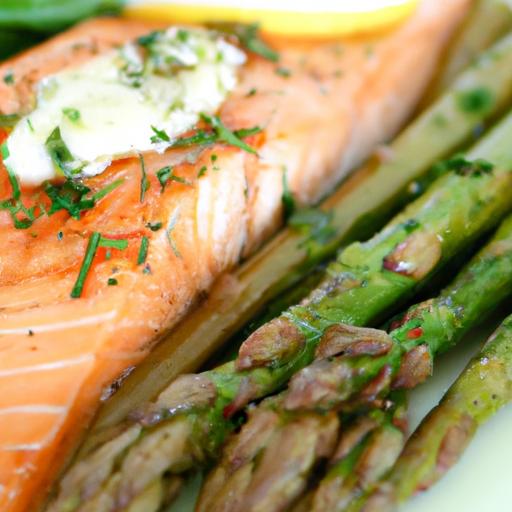When your carefully crafted dinner takes an unexpected plunge into the sea of saltiness, it can feel like mealtime doom. But fear not-your culinary mishap is far from a disaster. Welcome to the world of the Salty Skillet Savior, where simple kitchen magic transforms over-seasoned dishes into delicious delights. In this article, we’ll explore easy, practical fixes that rescue your meals from overzealous salt, letting your flavors shine without the briny bite. Say goodbye to salty regrets and hello to perfectly seasoned dinners, every time!
Salty Skillet Savior recipes shine brightest when the delicate dance of seasoning threatens to go awry, offering both science and artful solutions to salvage those hearty dishes. Every cook has faced the dreaded moment of over-salting – a pinch too many, a hurried pour – transforming a promising meal into a puckered disappointment. But fear not: understanding salt’s chemistry and knowing the clever tricks to restore balance can turn your kitchen moment from panic to pride.
Prep and Cook Time
Preparation: 5 minutes | Cooking: 10 minutes | Total Time: 15 minutes
Yield
Serves 4 hungry guests
Difficulty Level
Easy – Perfect for every home chef
Ingredients
- 1 cup plain cooked rice (white or brown)
- 1 medium peeled potato, sliced thin
- 1 tablespoon unsalted butter or neutral oil
- 1/2 cup plain yogurt or sour cream (for creamy dishes)
- 1/4 cup shredded cheese (mild varieties like mozzarella or gouda)
- 1 teaspoon sugar or honey
- Fresh herbs (chopped parsley, cilantro, or basil)
- 1 cup unsalted broth or water
Instructions
- Act swiftly and assess: When you notice your dish is overly salty, remove it from direct heat to halt further flavors from intensifying.
- Add bulk with starch: Gently fold in 1 cup of cooked rice or add a few thinly sliced peeled potatoes. These absorb excess salt naturally. Cook gently over medium-low heat, stirring occasionally for about 5 minutes.
- Smooth and mellow: For creamy sauces or stews, incorporate 1/2 cup plain yogurt or sour cream and stir to blend, which softens salty edges without overpowering.
- Balance with sweetness: Stir in a delicate touch of 1 teaspoon sugar or honey. This creates a subtle counterpoint to salt’s sharpness. Taste frequently as a little sweetness goes a long way.
- Boost with fresh herbs: Add a sprinkle of fresh chopped herbs like parsley or basil to introduce bright, flavor-forward notes that distract and complement.
- Broaden with liquids: If the dish’s consistency allows, add 1 cup unsalted broth or water to dilute saltiness while preserving depth.
- Finish with fat: Stir in a pat of unsalted butter or neutral oil to round out and mellow the overall flavor profile.
- Final tasting: Adjust any individual ingredients lightly, ensuring your dish hits a harmonious balance without sacrificing its essence.
Tips for Success: Smart Kitchen Hacks to Rescue Over-Seasoned Dishes
- Use starches like rice, potatoes, or even bread cubes to soak up unwelcome salt – they’re a simple yet powerful tool in your salty skillet savior arsenal.
- For soups or sauces, adding a splash of acidic liquid like lemon juice or vinegar can lift flavors and distract the palate from saltiness.
- Creamy dairy ingredients naturally mellow flavors; a drizzle of coconut milk works wonders in curries, while sour cream suits southwestern or Mexican dishes.
- Resist the temptation to add more liquid at once – thin your dish gradually to preserve desired consistency.
- Reserve some neutral starches like plain rice or pasta in your kitchen to use as emergency buffers for seasoning mishaps.
Serving Suggestions
Layer your salvaged skillet creation over a bed of fluffy rice or alongside crusty, unsalted bread to further ease salt intensity. Garnish generously with vibrant fresh herbs and a light drizzle of olive oil or a squeeze of fresh lemon juice to brighten flavors. Pair with steamed seasonal vegetables or a crisp green salad to complete the meal’s balance. Presentation matters – colorful garnishes and thoughtfully plated portions invite appetite and celebrate your cooking ingenuity.
| Nutritional Element | Per Serving |
|---|---|
| Calories | 280 |
| Protein | 8g |
| Carbohydrates | 30g |
| Fat | 12g |
Discover more smart seasoning techniques to refine your palate and elevate every dinner. For a deeper scientific dive into salt and flavor balance, Exploratorium’s Science of Salt is an excellent resource.

Q&A
Q&A: Salty Skillet Savior – Easy Fixes for Over-Seasoned Dinners
Q1: Why do some dinners end up too salty even when I try to be careful?
A: Salt is sneaky! It can come from multiple ingredients-broths, sauces, and seasonings-that add up quickly. Also, salt’s flavor intensifies as dishes reduce or cook down. So, even a pinch too many can tip the scales.
Q2: What’s the quickest way to save a dinner that’s way too salty?
A: The fastest fix is dilution. Add unsalted liquids like water, broth (low-sodium recommended), or even a splash of cream to mellow the saltiness. This spreads the salt flavor out, making it less intense.
Q3: Can adding potatoes really soak up the salt?
A: Potatoes are kitchen legends! Tossing a peeled, raw potato into a salty stew or soup can absorb some excess salt. After simmering for 15-20 minutes, remove the potato. It won’t cure all saltiness but offers a helpful buffer.
Q4: How can acids help fix an over-salted dish?
A: Acids like lemon juice, vinegar, or tomatoes balance saltiness by brightening the flavors and tricking your taste buds. Use sparingly-start with a teaspoon, then taste. Too much acid can overpower the dish, so finesse is key.
Q5: Are there any tricks involving sugar to tame salt?
A: Absolutely! A pinch of sugar or a drizzle of honey can counteract salt’s sharp edge by adding a subtle sweetness. This works especially well in tomato-based sauces or spicy dishes.
Q6: What if the dish is a thick sauce or stew-is diluting always possible?
A: Not always. When dilution might ruin texture, try stirring in unsalted cooked grains or vegetables-like rice, cooked beans, or shredded cabbage-to soak up salt and expand the dish without watering it down.
Q7: How can I prevent over-salting in the first place?
A: Season gradually and taste often as you cook. Remember, you can always add salt but can’t take it away! Use measuring spoons for salt and be cautious with salty ingredients like soy sauce or Parmesan cheese.
Q8: If all else fails, can the over-salted dish be recycled into something new?
A: Definitely! Turn salty soups into bases for creamy chowders by adding potatoes and cream, or transform salty stews into filling for wraps with fresh veggies and unsalted grains. Sometimes a salty ‘oops’ can spark delicious creativity!
Ready to become your dinner’s salty skillet savior? With these crafty fixes, no meal is doomed to salty disaster!
Key Takeaways
In the kitchen, even the best intentions can sometimes lead to a little too much salt sneaking into the skillet. But fear not-saving your savory masterpiece is easier than you think. With these simple, trusty fixes at your fingertips, you can transform an over-seasoned dinner disaster into a flavorful triumph. Remember, the secret to a perfectly balanced meal isn’t just in the seasoning, but in the art of knowing how to adjust and adapt. So next time your skillet sings a little too salty, consider it an invitation to experiment, rescue, and savor every bite. Your taste buds-and your guests-will thank you.








